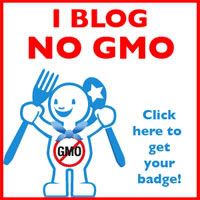Reduce Footprints: Change The World Wednesdays I began to think about what I eat and where it comes from, is it locally grown and is it organic. I always do this when shopping, but in yesterdays post; All Natural Help for Gastritis I encouraged my friend to eat organic.
So living in the middle of the desert I know we can't always eat locally grown foods. In fact, when I think of the price difference between organic and non-organic I know a lot of people have trouble with this too.
So I encourage locally grown food. For me it includes about a 200 mile radius. My all natural Bison comes from northern Arizona. There are also local food markets that sell; Locally Grown, Organic & All Natural produce.
We have a bread company (Alpine Valley Breads) that makes all natural bread with organic ingredients. They are here in Mesa, Arizona and service the surrounding states. But even though it's made within 10 mile of my home, where does the wheat come from. We do grow some wheat here but is that where it come from. I doubt it and I didn't call to find out.
We also have a beer brewery (Four Peaks Brewing Co.)close by, within five miles. But again, where do the Hops come from. Are they locally grown, I doubt it.
I could go on about locally grown produce and products but, I think you get my point. If I are looking for a locally raised, all natural & organic chicken or bison it may be easy. If I have a choice between an organic orange grown in Arizona and one grown in Texas, I'll pick from Arizona. But, if I have to chose between a non-organic orange from AZ and a organic one grown in TX, I'll take the organic one from TX.
So, with that being said; I still encourage organic over locally grown. Locally grown may leave us with a toxic overload and lacking variety. There are foods to think about though, ones that should always be eaten organic and ones that contain a lessor toxic burden.
Below the Environmental Working Group (EWG) lists a shopping guide. And if you are trying to save money, hit the local farmers markets and buy organic when needed according to the list below.
Buy these Organic
Peach
Apple
Bell Pepper
Celery
Nectarine
Strawberries
Cherries
Kale
Lettuce
Grapes (Imported)
Carrot
Pear
Lowest in Pesticides (non-organic may be used)
Onion
Avocado
Sweet Corn
Pineapple
Mango
Asparagus
Sweet Peas
Kiwi
Cabbage
Eggplant
Papaya
Watermelon
Broccoli
Tomato
Sweet Potato
One last thought (from the Mayo Clinic);
 If a food bears a USDA Organic label, it means it's produced and processed according to the USDA standards and that at least 95 percent of the food's ingredients are organically produced. The seal is voluntary, but many organic producers use it.
If a food bears a USDA Organic label, it means it's produced and processed according to the USDA standards and that at least 95 percent of the food's ingredients are organically produced. The seal is voluntary, but many organic producers use it. Products certified 95 percent or more organic display this USDA seal.
--------------------------------------------------------------------------------
Products that are completely organic — such as fruits, vegetables, eggs or other single-ingredient foods — are labeled 100 percent organic and can carry a small USDA seal. Foods that have more than one ingredient, such as breakfast cereal, can use the USDA organic seal or the following wording on their package labels, depending on the number of organic ingredients:
■100 percent organic. Products that are completely organic or made of all organic ingredients.
■Organic. Products that are at least 95 percent organic.
■Made with organic ingredients. These are products that contain at least 70 percent organic ingredients. The organic seal can't be used on these packages.
Foods containing less than 70 percent organic ingredients can't use the organic seal or the word "organic" on their product label. They can include the organic items in their ingredient list, however.






















Organic products are essentially earth-friendly, sustainable and natural, not only in its entity but in production mode. Which makes safer and healthier.
ReplyDeleteI have really struggled with this challenge. Like you, I started thinking about the ingredients. Yes, I can find locally made bread and pasta, etc. but were the ingredients grown here in the mountains. I kinda doubt it. Add to that that I'm vegan so, eating strictly within a 100 mile radius means that my nutrition will suffer.
ReplyDeleteI believe that the beauty of the challenge, however, is that it raises awareness. Most people don't really think about where their food comes from. For me, it's similar to buying organic ... the options aren't always available and sometimes, even when they are, they are beyond my budget. So, like buying organic, I'll buy local when I can. But, I'll also have to expand my definition of local to accommodate a healthy diet. I suppose that if we opt for local whenever possible, it'll be like organic in another way ... demand will generate supply.
Wonderful post!
Small Footprints
Small Footprints,
ReplyDeleteYou are so right when you mention that, Most people don't think about where their food comes from. It is like everything else we use, drink and put on our body. People, Just Do It. They wonder why they are sick, feel bad or have a disease but never look at all the things in their life. Opening your eyes is the first step and then making a small change is the next.
Thanks for your reply.